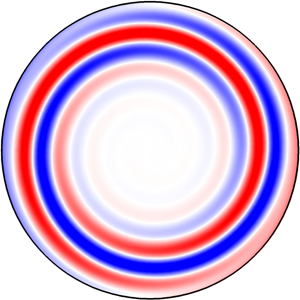Article contents
Non-modal transient growth of disturbances in pulsatile and oscillatory pipe flows
Published online by Cambridge University Press: 02 December 2020
Abstract

Laminar flows through pipes driven at steady, pulsatile or oscillatory rates undergo a subcritical transition to turbulence. We carry out an extensive linear non-modal stability analysis of these flows and show that for sufficiently high pulsation amplitudes the stream-wise vortices of the classic lift-up mechanism are outperformed by helical disturbances exhibiting an Orr-like mechanism. In oscillatory flow, the energy amplification depends solely on the Reynolds number based on the Stokes-layer thickness, and for sufficiently high oscillation frequency and Reynolds number, axisymmetric disturbances dominate. In the high-frequency limit, these axisymmetric disturbances are exactly similar to those recently identified by Biau (J. Fluid Mech., vol. 794, 2016, R4) for oscillatory flow over a flat plate. In all regimes of pulsatile and oscillatory pipe flow, the optimal helical and axisymmetric disturbances are triggered in the deceleration phase and reach their peaks in typically less than a period. Their maximum energy gain scales exponentially with Reynolds number of the oscillatory flow component. Our numerical computations unveil a plausible mechanism for the turbulence observed experimentally in pulsatile and oscillatory pipe flow.
JFM classification
- Type
- JFM Rapids
- Information
- Copyright
- © The Author(s), 2020. Published by Cambridge University Press
References
REFERENCES
Xu et al. supplementary movie 1
Xu et al. supplementary movie 2
Xu et al. supplementary movie 3
Xu et al. supplementary movie 4
- 12
- Cited by





